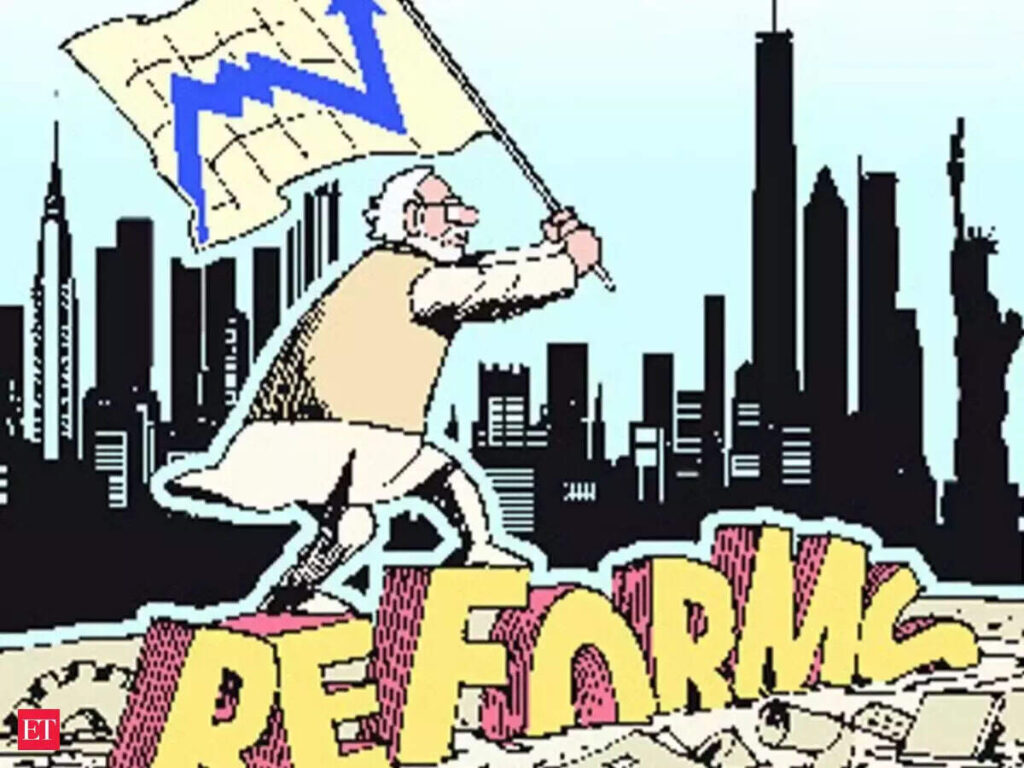By Dr. Gyan Pathak
India is in urgent need to save its cities, people, and economy from multiple crises. Politics in classification of urban and rural areas may not save it, rather it creates mismatch between the stark reality on the ground and the proper planning and effective action plan. There is no escape from urban transformation now, or else the country would fall into unprecedented crisis.
The United Nations Economic and Social Commission for Asia and Pacific’s (ESCAP’s) 81st Commission Session has come out with a report titled “Urban Transformation in Asia and the Pacific: From Growth to Resilience” which flagged many areas of concern for India, which needs to be urgently tackled, since 70 per cent of India’s GDP comes from cities which are projected to grow to 40 per cent urban by 2036. The report says, “which means sustainable urbanization is essential to the stated goal of achieving developed country status by 2047.”
Moreover, the projection of growth of urban centres are based on the self-reported country metrics. It creates a mismatch between the ground reality and the needed measures to tackle them. There is a politics in self-reported metrics, since application of global definitions under DEGURBA methodology, endorsed by the UN Statistical Commission in 2020, which analyses multi-temporal high-resolution satellite imagery in 1 sq km grid cells by looking at built-up area, or buildings versus open space, to categorize land, would give entirely different picture of urbanization in the country.
Under DEBUBRA methodology, cities are the urban centre which are continuous grid cells with at least 1,500 inhabitants per square km of permanent land and a minimum total population of50,000 people and for towns, suburbs or semi-dense these figures are 300 and 5,000 respectively. For rural areas it is density below 300 inhabitants per square km or grid cells with a higher density that are not adjacent to a sufficient number of other grid cells to be classified as an urban cluster.
Applying these definitions, the report points out that “India, in 2025, is already majority urban, with just15.5 per cent of its population living in rural areas. A plurality live in towns and suburbs (44.8 per cent) with another 39.8 per cent of the population living in cities. These figures mismatch self-reported data where the urban population was noted as 31.8 per cent in the country’s most recent census in 2011.
Demographers have projected that the population of the Asia and Pacific region will peak in 2051 at 5.2 billion people. India is already the most populated nation with a population of 1.42 billion. It would have grave implication for the region. On the basis of population, the second largest populated city is Delhi, and 9th largest populated city is Mumbai out of 10 in the region.
Fragmented jurisdiction has been flagged. As example, the report says that Greater Kolkata consists of four municipal corporations and 37 municipalities, while the central city is unique in India with its mayor-in-council governance system. The world’s worst air pollution is one of the persistent problems plaguing Kolkata’s fragmented governance regime.
Functional fragmentation also places the Indian cities. Mumbai is mentioned as a typical case of a city with functional fragmentation. According to the 2024 Praja Urban Governance Index, Mumbai has control over more of the 18 functions authorized by the Indian Constitution than any other city in the country, due to devolution from Maharashtra state. The authority over these 11 functions has spurred the creation of municipal agencies to oversee specialized tasks.
Status of the dissemination of the Degree of Urbanisation in Asia and the Pacific shows that NSO in India has learned the method but has not yet used it on national data. It impacts the urban resilience and sustainability.
Cities face vulnerabilities from macrotrends like economic volatility and climate change, as well as from the nexus of migration, inequality and social justice. The report mentions informality of workers in the country which is close to 90 per cent, which need to be supported.
Climate change related crises, such as heatwaves and flooding, has specifically been mentioned which are likely to impact the cities, its people and the economy in the unprecedented way. These my cause widespread destructions to homes, infrastructure, and livelihood.
Plastic pollution is mentioned as one of the grave issues, along with water and air pollution. In Ocean plastic pollution, India is second largest country in the region which produced 126513 mt of plastic pollution in 2023.
Half of the global slum growth is projected to take place in 8 countries, and India is one of them. Median/average home price compared with median annual household income in 2023 was very high. For example, in Mumbai, it was 11.7 times. As for median/average monthly rent compared with median monthly household income in 2023 in Mumbai was as high as 78 per cent.
The path to sustainable development runs through cities. Nevertheless, getting the cities right – and by extension, getting all human settlements along urban-rural continuum right – is a challenge, but not an insurmountable one.
The report has made five policy recommendations – enhance regional cooperation for resilience and sustainable urban development; adopt integrated national urban policies to bolster multilevel governance; strengthen subnational and local data collection and reporting to promote evidence-based urban policies; plan for urban demographic changes with strengthened spatial planning and inclusive social policies; and pursue diversified and innovative approach to urban financing. (IPA Service)

 Trump Is In Backfoot In Tariff War, India Should Extract Maximum Benefits
Trump Is In Backfoot In Tariff War, India Should Extract Maximum Benefits 